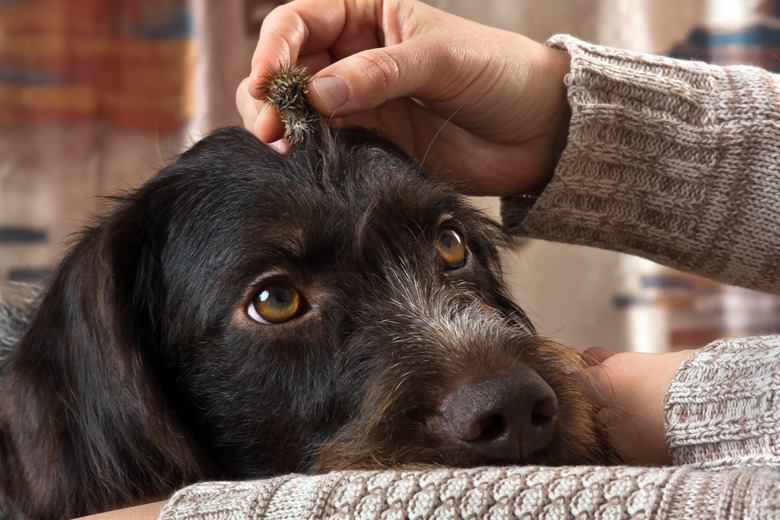How To Get Rid Of Stickers In The Yard
We may receive a commission on purchases made from links.
If you've ever stepped on a sticker in your yard without shoes on, you know how painful the spiky little balls can be. Grass burrs (Cenchrus spinifex) go by many names, including sandburrs, sticker burrs, burrweed, and grass stickers, but whatever you call them, they're a pain to remove from your yard.
What Are Yard Stickers?
What Are Yard Stickers?
You're familiar with the sticker part of the plant that pulls off when it grabs onto something, but the plant itself is a grassy weed. The spiny burrs are the seeds, and they spread by latching onto a person or animal. They're common in dry areas, especially in hot weather, and they tend to grow in Bermuda grass or St. Augustine grass.
This annoying and sometimes painful weed is more likely to show up if your lawn isn't healthy and strong. Once you have a grass burr problem, it can be difficult to get rid of it. In warm climates, the weeds can overwinter and grow as perennials, coming back the following year. Even in cooler climates where stickers are annuals, the widely spreading seeds keep the weeds repopulating each year.
Keep Your Yard Healthy
Keep Your Yard Healthy
One of the best ways to fight stickers naturally is to keep your yard strong and healthy. The burrs can't spread well if you have a thick, lush lawn. Regularly watering your lawn can help since the sticker weeds don't like lots of water, and the irrigation helps keep the lawn lush in hot, dry conditions. When you mow, bag the clippings to avoid spreading the burr seeds even more.
Pull Them by Hand
Pull Them by Hand
If you only have a few of these prickly plants, you can pull them by hand to solve the problem temporarily. However, the stickers have likely already started to spread, so there's a good chance more will grow the following year if you don't treat your yard for them. Use protective gardening gloves to keep the burrs from sticking to your skin. Grasp the plant at the base to pull it out at the roots. Throw the plants away in the trash to keep the seeds from spreading.
Apply the Right Pesticide
Apply the Right Pesticide
It's tough to find postemergent pesticides that work on grass burrs that are available to homeowners. That means you don't have a lot of pesticide options once you spot the stickers in your yard. One option that's easily available is Image Kills Nutsedge, which is formulated to kill difficult weeds, including sandburrs. Follow the instructions precisely to avoid harming grass and other plants.
A method that's often more efficient is using a preemergent herbicide that's timed right. Look for a preemergent containing dithiopyr, indaziflam, oryzalin, or pendimethalin for the best results. These active ingredients work best when you do two applications of the herbicide since the weeds have a long germination time.
Do the first pesticide application in late winter before your area has its last major freeze. You want to apply it before the ground starts to thaw and the seeds start to germinate. The second application should happen 90 days later and helps catch any weeds that didn't die with the first application. If you don't do the follow-up application, you'll likely see at least a few of the weeds in your yard in the summer.
